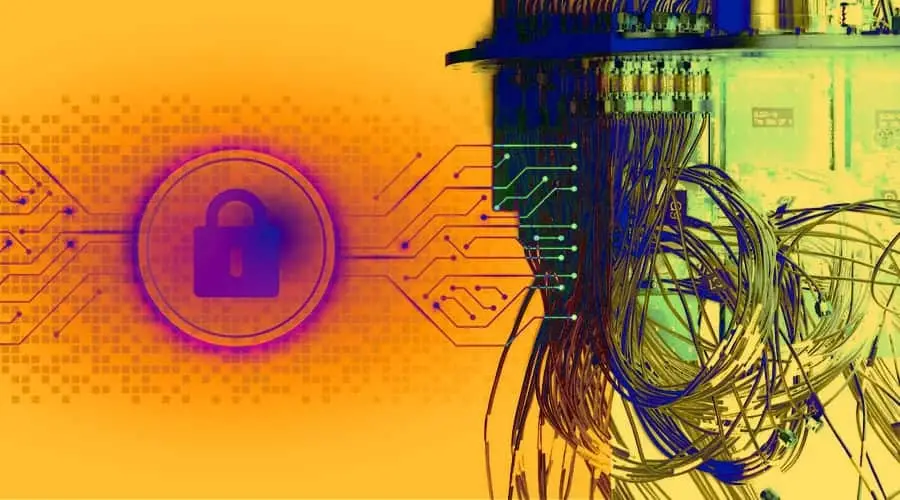As quantum computing advances from theoretical concepts to practical implementations, it heralds a transformative shift in various industries, including cybersecurity. While quantum computers promise unprecedented computational power and efficiency, they also introduce new security threats and vulnerabilities. Understanding these risks is crucial for preparing and defending against potential quantum-era cyber threats.
Quantum Computing: A Brief Overview
Quantum computing leverages the principles of quantum mechanics to perform calculations at speeds unattainable by classical computers. Unlike classical bits, which represent data as either 0 or 1, quantum bits (qubits) can represent and process multiple states simultaneously due to superposition. Additionally, quantum entanglement allows qubits to be interlinked, enabling complex problem-solving capabilities.
Potential Security Threats of Quantum Computing
- Breaking Classical Encryption:
- Public Key Cryptography: Quantum computers pose a significant threat to traditional public key cryptographic systems, such as RSA and ECC. Shor’s algorithm, a quantum algorithm, can efficiently factor large numbers and solve discrete logarithms, which are the foundation of these encryption schemes. This means that quantum computers could potentially decrypt information secured by these methods, compromising sensitive data.
- Symmetric Key Cryptography: While symmetric key algorithms (like AES) are not directly vulnerable to Shor’s algorithm, quantum computers can still impact them. Grover’s algorithm can speed up the process of brute-forcing symmetric keys, effectively halving the security strength of encryption methods. For instance, a 256-bit key would offer the security equivalent of a 128-bit key against a quantum adversary.
- Quantum Data Harvesting:
- Adversaries could intercept encrypted communications now and decrypt them in the future when quantum computers become available. This practice, known as quantum data harvesting, poses a significant risk to the confidentiality of sensitive data, especially in sectors dealing with long-term data privacy, such as government and finance.
- Quantum-Enhanced Attacks:
- Quantum computing could enhance existing cyberattack techniques by performing complex calculations more rapidly. For example, quantum algorithms could improve the efficiency of brute-force attacks, password cracking, and other methods used to compromise systems and networks.
- Supply Chain Risks:
- As quantum computing technology evolves, there is a risk of supply chain attacks targeting quantum hardware and software. The integration of quantum components into existing systems could introduce vulnerabilities if not properly secured and vetted.
Preparing for Quantum Threats:
- Post-Quantum Cryptography:
- To mitigate the risks posed by quantum computing, researchers and organizations are developing post-quantum cryptography (PQC) algorithms. These algorithms are designed to be secure against quantum attacks and are undergoing evaluation and standardization by entities such as the National Institute of Standards and Technology (NIST).
- Quantum Key Distribution (QKD):
- Quantum key distribution is a technique that uses quantum mechanics to securely exchange cryptographic keys. QKD can detect eavesdropping attempts, providing an additional layer of security. While still in its early stages, QKD offers a promising solution for secure communications in the quantum era.
- Hybrid Systems:
- Implementing hybrid cryptographic systems that combine classical and quantum-resistant algorithms can provide a layered defense against quantum threats. By integrating both types of encryption, organizations can enhance their security posture and better protect sensitive information.
- Ongoing Research and Adaptation:
- Staying informed about the latest developments in quantum computing and cybersecurity is essential. Organizations should actively participate in research, collaborate with experts, and continuously adapt their security strategies to address emerging quantum threats.
Conclusion
The advent of quantum computing presents both exciting opportunities and significant challenges for cybersecurity. As quantum technology continues to evolve, it is imperative for organizations and individuals to recognize and address the associated security threats and vulnerabilities. By preparing with post-quantum cryptographic solutions, quantum key distribution, and hybrid systems, we can build a resilient defense against the potential risks of the quantum computing era.


Leave a Reply